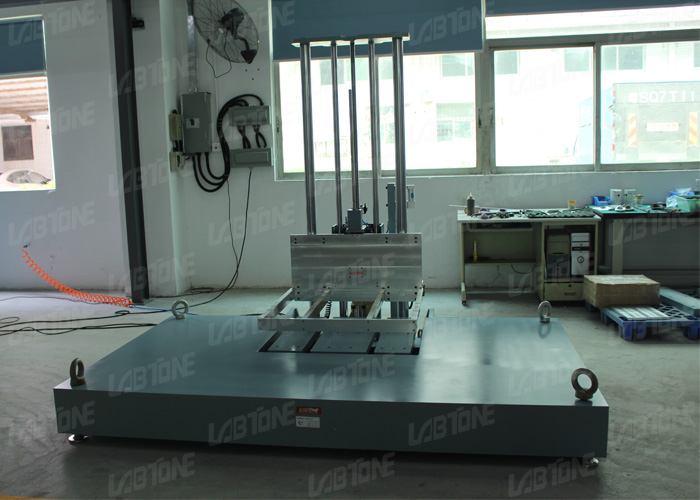Product Description
For large packaging with high mass, the vertical drop height during transport will be low and therefore they need drop test with relatively low drop height. Zero Height Drop Tester is mainly used for drop test of big package. It uses an E-shaped fork that can move downward quickly as a bracket and specimen is placed in balance according to test requirement(surface,edge or Corner drop test). During testing, the bracket moves downwards quickly ahead of specimen with acceleration greater than 3G to ensure the separation of bracket and specimen and achieve free fall. The standard fall distance is ranged between 2.54cm-120cm.
Specification
| Model | DT015 | DT020 | DT030 |
| Drop height(mm) | 0-1200 | 0-1200 | 0-1200 |
| Specimen weight(KG) | 150 | 200 | 300 |
| Specimen dimension(mm) | 1000*1000*1000 | 1200*1200*1200 | 1200*1200*1200 |
| Drop type | Free drop | ||
| Machine dimension(mm) | 1900*1700*2800 | 2100*1700*2800 | 2100*1700*2800 |
| Machine Weight(kg) | 2500 | 3200 | 4500 |
| Power supply | 3 phase AC380V 50HZ | ||
| Standards | ISO2248-72(E) GB/T4857.5 JISZ0202-87 IEC68-2-27 | ||
Corporate Culture
We hope:To provide the best solutions rather than selling products.
Management idea:Technical research and development as the foundation,integrity-based,survival on quality, service to win customers.
Our vision:To be the well-know manufacturer in the industry of environment and reliability test equipment, and win the respect and trust from customers around the world.
Our mission:To provide the most advanced technology and the most reliable environmental testing equipments to customers.
Core competitiveness:Profession, Quality, Service, Innovation.
FAQ:
How do you attach the hardware you’re testing to your shaker?
By means of a fixture, usually aluminum or magnesium for lightness coupled with rigidity. They can be cast, or smaller fixtures machined from solid stock. Most fixtures are welded.
How do you control shakers?
If we’re looking for resonances in the product we’re testing, we command the shaker to shake the product at one frequency at a time but to vary that test frequency, to sweep it over a range of frequencies.But more realistically, we command the shaker to vibrate randomly and to excite all the resonances simultaneously.Control commands go into the keyboard of a specially-programmed computer.
What are those resonances?Are they bad?
Have you ever noticed the steering wheel moving with rather large displacement amplitude, larger than the input to the column? That magnification is called resonance. Possibly it annoys you. There’s a slight chance that in a few years that whipping of the steering column might cause bending fatigue failure.When we shake an automotive or ship or land vehicle instrument, we're looking for, for example, portions of printed wiring boards (PWBs) responding with greater motion than we're inputting. That flexing may damage PWB wiring, it may damage the attached components, and it will damage the soldered connections between components and the PWB.
Factory











